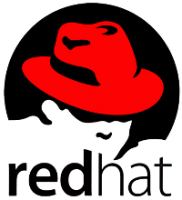First public pre-release version of Red Hat Enterprise Linux 6
 Following a number of non-public pre-release versions, Red Hat has released a downloadable beta of Red Hat Enterprise Linux 6. A successor to the version 5 series of Red Hat Enterprise Linux (aka RHEL) is perhaps overdue. Although it entered its fifth major incrementation just a few weeks ago with the release of RHEL 5.5, the 5 series is now more than 3 years old. With its Linux 2.6.18-based kernel and a number of other slightly dusty-looking components, it still, at first glance and despite the increment release, has the look of a Linux distribution from yesteryear.
Following a number of non-public pre-release versions, Red Hat has released a downloadable beta of Red Hat Enterprise Linux 6. A successor to the version 5 series of Red Hat Enterprise Linux (aka RHEL) is perhaps overdue. Although it entered its fifth major incrementation just a few weeks ago with the release of RHEL 5.5, the 5 series is now more than 3 years old. With its Linux 2.6.18-based kernel and a number of other slightly dusty-looking components, it still, at first glance and despite the increment release, has the look of a Linux distribution from yesteryear.
As anticipated, for virtualisation RHEL6 will rely fully on KVM (kernel-based virtual machine) as its hypervisor. KVM has been driven primarily by Red Hat developers as part of the Linux kernel. KVM has been in RHEL5, which originally used Xen alone for virtualisation, since version 5.4. RHEL6 will no longer include the Xen hypervisor, but will still run as a para or fully virtualised guest system on Xen. RHEL6 will offer experimental support for Linux (NameSpace) Containers (LXC) – an OpenVZ-like virtualisation solution.
The RHEL6 kernel is based on Linux 2.6.32, released in December. For NVIDIA graphics hardware, Red Hat is using the still shiny new 'Nouveau' driver. Nouveau development has, at least in part, been driven by Red Hat. Like the drivers for AMD and Intel graphics hardware it supports kernel-based mode setting (KMS), which improves the reliability of suspend to RAM and suspend to disk and reduces monitor flicker when starting X Server.
GNOME 2.28 and KDE 4.3.4 are included as desktop environments and Firefox 3.5, Thunderbird 3 and OpenOffice.org 3.1 are among the many hundreds of desktop applications. Red Hat includes PostgreSQL 8.4 and MySQL 5.1 databases, OpenJDK 1.6 as a Java runtime environment and GCC 4.4 as a compiler. These and other version numbers indicate that RHEL6 is largely based on Fedora 12, released by the Red Hat sponsored Fedora Project last autumn.
File systems supported by RHEL6 will include Ext4 and, according to current plans, XFS. The RHEL6 beta also includes support for Btrfs, aka "the next generation file system for Linux", which, though marked as an experimental 'technology preview', strongly suggests that Red Hat intends to support it in the long term.
RHEL6 will be available in versions for systems with x86-32 (i386/ia32/x86), x86-64 (AMD64/Intel 64/x64), System z (z9 or better) and Power (64 bit) processor architectures. As expected, RHEL6 will no longer support the Itanium (IA64). The release notes reveal that the company will, however, offer extended support for the Itanium version of RHEL5 to selected customers until March 2017. Under current plans, support for RHEL5 on other architectures is due to be dropped three years earlier – seven years after RHEL5 was first released.
The press release announcing the release of the beta also emphasises many further enhancements. These include more efficient power management and better performance, the latter partly due to the CFS scheduler and improvements to the kernel's locking mechanisms developed by Red Hat staff for the main Linux development tree. RHEL6 also includes new security features, such as the System Security Services Daemon (SSSD), an SELinux sandbox for desktop applications and isolation of guest systems using sVirt.
RHEL includes performance diagnosis and debugging tools Ftrace and Perf, which have been developed for the kernel and have caused quite a stir. The installation media will support UEFI. Further details on this and many other new features can be found in the release notes, which, along with installation instructions and more than a dozen other documents in various formats, can be found on the RHEL6 documents web page. Red Hat has also set up the rhelv6-beta-list mailing list for discussions between beta testers. Appendix C to the release notes contains information on RHEL5 features that are expected to be discontinued in RHEL6. These include a number of obsolete drivers and various system-config programs for which there is no direct replacement.
Following optional registration, the RHEL6 beta can be downloaded from the Red Hat FTP server. It will be available from Red Hat's mirror servers. As is so often the case, Red Hat has yet to announce a planned release date for RHEL6 or whether any further pre-release versions will be made publicly available.
(crve)
![Kernel Log: Coming in 3.10 (Part 3) [--] Infrastructure](/imgs/43/1/0/4/2/6/7/2/comingin310_4_kicker-4977194bfb0de0d7.png)

![Kernel Log: Coming in 3.10 (Part 3) [--] Infrastructure](/imgs/43/1/0/4/2/3/2/3/comingin310_3_kicker-151cd7b9e9660f05.png)
















